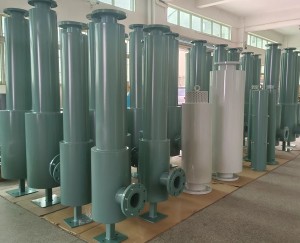When discussing vacuum pump pollution, most operators immediately focus on oil mist emissions from oil-sealed pumps - where heated working fluid vaporizes into potentially harmful aerosols. While properly filtered oil mist remains a critical concern, modern industry is awakening to another significant but historically neglected pollution type: noise contamination.
Health Impacts of Industrial Noise
1. Auditory Damage
130dB noise (typical unfiltered dry pump) causes permanent hearing loss in <30 minutes
OSHA mandates hearing protection above 85dB (8-hour exposure limit)
2. Physiological Effects
15-20% increase in stress hormone levels
Sleep pattern disruption even after noise exposure ends
30% higher cardiovascular disease risk among chronically exposed workers
Case Study
One of our clients faced this issue firsthand—their dry vacuum pump generated noise levels up to 130 dB during operation, far exceeding safe limits and posing serious risks to workers' health. The original silencer had deteriorated over time, failing to provide adequate noise suppression.
We recommended the silencer pictured above to the customer. Filled with sound-absorbing cotton, the noise generated by the vacuum pump is reflected inside the silencer, converting the sound energy into heat. During this reflection process, the noise is reduced to a level that has minimal impact on production personnel. The silencing mechanism works through:
- Energy Conversion - Sound waves transform to heat via fiber friction
- Phase Cancellation - Reflected waves interfere destructively
- Impedance Matching - Gradual airflow expansion minimizes turbulence
Testing has shown that a small silencer can reduce noise by 30 decibels, while a large one can reduce noise by 40-50 decibels.

Economic Benefits
- 18% productivity increase from improved work environment
- 60% reduction in noise-related OSHA violations
- 3:1 ROI through reduced healthcare costs and downtime
This solution not only improved workplace safety but also complied with occupational health regulations. Proper noise control is essential—whether through silencers, enclosures, or maintenance—to protect workers and ensure sustainable operations.
Post time: Jul-29-2025







